Creating successful HVAC proposals requires careful attention to detail and avoiding common mistakes that can cost you contracts. When it comes to HVAC proposal writing, it’s important to be aware of the potential pitfalls and take proactive steps to avoid them. In this article, we will discuss some of the most common HVAC proposal mistakes and provide tips on how to steer clear of them.
Key Takeaways:
- Don’t focus on just one section of the house when troubleshooting HVAC systems. Treat each home as a unique system and consider the overall performance throughout the entire house.
- Don’t neglect the importance of ductwork when installing a new HVAC system. Ensure there are no leaks and that the system fits the home properly.
- Pay attention to air flow, air pressure, and ventilation to avoid problems and prevent HVAC systems from running harder than necessary.
- Take advantage of home performance opportunities to enhance HVAC efficiency. Identify insulation issues, dirty ducts, and other factors that can be improved.
- Avoid installing improperly sized HVAC systems to prevent higher utility costs and maintenance issues.
By avoiding these common HVAC proposal mistakes and following best practices, you can increase your chances of success in the industry. Pay attention to detail, thoroughly assess each project, and provide accurate quotes based on accurate measurements and system efficiency. Remember to also focus on the business side of your company to ensure long-term success.
Focusing on Only One Section of the House
When troubleshooting HVAC systems, it’s crucial to remember that each house is a complex system, and focusing on only one section can lead to ineffective solutions. Every part of the home impacts the overall performance of the HVAC system, and neglecting certain areas can result in compromised comfort and efficiency.
To ensure that your HVAC system works optimally throughout the entire house, it’s essential to treat each home as a unique system. This means considering the airflow, insulation, and other factors that contribute to heating and cooling needs in different areas. By taking a comprehensive approach, you’ll be able to address any issues and create a well-balanced HVAC system that meets the specific requirements of each home.
When troubleshooting HVAC systems, it’s essential to examine the entire house and identify any potential issues that may affect performance. This includes factors such as ductwork, insulation, and air flow. By addressing these areas holistically, you can ensure that the HVAC system operates at its best, providing maximum comfort and energy efficiency for the entire household.
| HVAC Troubleshooting Tips | Prevention | Solution |
|---|---|---|
| Inspect ductwork for leaks | Regular maintenance | Seal any leaks and replace damaged ducts |
| Check insulation levels | Periodic evaluations | Add or replace insulation to improve energy efficiency |
| Assess air flow in each room | Ongoing monitoring | Adjust dampers or install additional vents to balance air flow |
Conclusion
By understanding that each house is a unique system and addressing the HVAC needs throughout the entire home, you can avoid the common mistake of focusing on only one section. Taking a comprehensive approach to troubleshooting HVAC systems will ensure that your clients enjoy optimal comfort and energy efficiency in every corner of their homes.
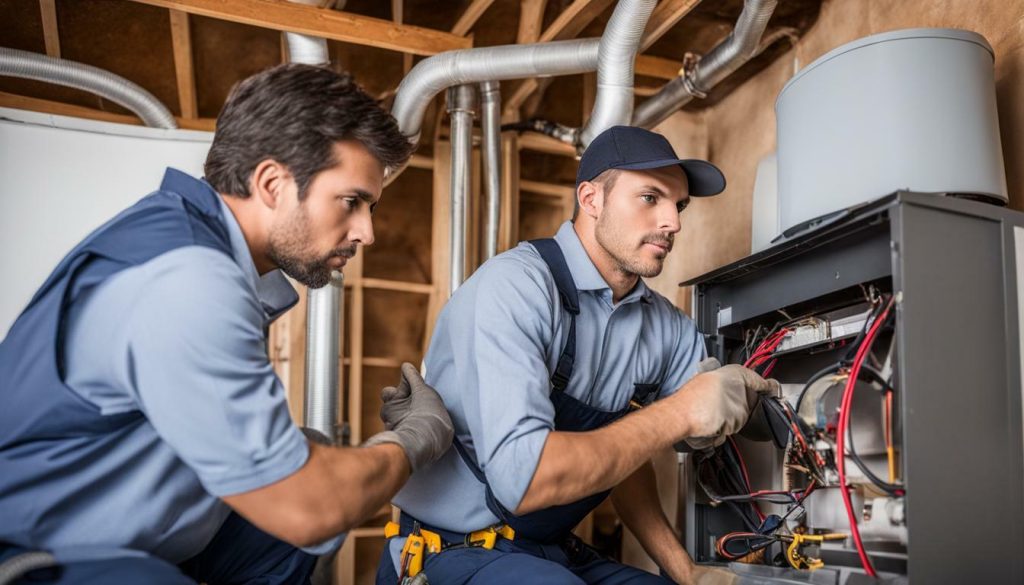
Neglecting the Importance of Ductwork
Don’t underestimate the role of ductwork in an HVAC system – neglecting it can lead to inefficiencies and compromised performance. When installing a new HVAC system, many contractors make the mistake of focusing solely on the HVAC box and disregarding the importance of properly functioning ductwork. However, ductwork plays a crucial role in distributing conditioned air throughout the home and ensuring optimal performance.
One common issue with ductwork is the presence of leaks. Leaky ducts can result in air loss, reducing the overall efficiency of the system and leading to wasted energy. It’s essential to thoroughly inspect and change out ductwork when necessary to eliminate any leaks and ensure a proper fit for the new HVAC system.
In addition to leaks, ductwork should also be properly sized to match the specific needs of the home. Improperly sized ducts can cause air flow issues and hinder the system’s ability to deliver the desired level of comfort. By taking the time to assess the ductwork and make any necessary adjustments or replacements, HVAC contractors can avoid these common mistakes and provide their customers with a system that performs optimally throughout the entire house.
| Common Mistake | Impact |
|---|---|
| Neglecting ductwork | Inefficiencies and compromised performance |
| Leaky ducts | Air loss and wasted energy |
| Improperly sized ducts | Air flow issues and reduced comfort |
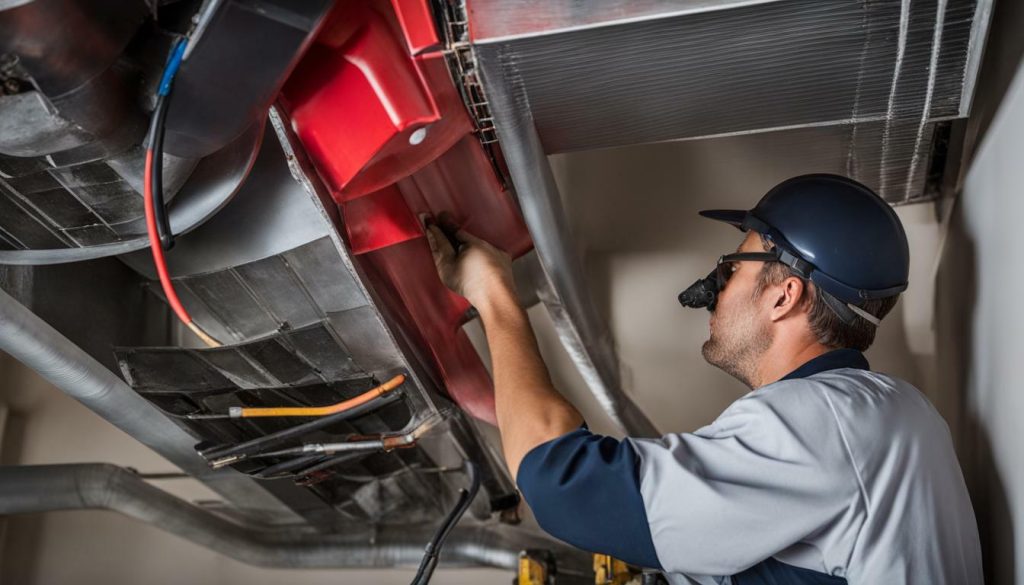
Proper Ductwork Installation for Optimal Performance
To avoid these ductwork-related mistakes, it’s crucial to prioritize proper installation techniques. This includes ensuring the ductwork is correctly sealed to prevent leaks and using the right size of ducts to accommodate the specific airflow requirements of the HVAC system. Additionally, regular maintenance and inspections should be conducted to detect and address any potential issues promptly.
By giving due consideration to ductwork, HVAC contractors can provide their customers with an efficient and reliable system that delivers optimal comfort throughout the entire house. Remember, neglecting ductwork can lead to inefficiencies and compromised performance, so it’s essential to prioritize its proper installation and maintenance.
Neglecting Air Flow
Proper air flow is crucial for optimal HVAC system performance, and neglecting it can lead to a range of issues. When designing and installing HVAC systems, it’s important to pay close attention to air pressure and ventilation to ensure that the system operates efficiently and effectively.
Inadequate air flow can result in poor indoor air quality, uneven temperatures throughout the house, and increased strain on the system. This can lead to higher energy consumption, reduced comfort for occupants, and potential breakdowns or malfunctions.
To avoid these problems, HVAC contractors should carefully consider the design and layout of ductwork, ensuring that it is properly sized and free from leaks or blockages. Additionally, regular maintenance and cleaning of the system’s components are necessary to maintain optimal air flow and prevent any buildup of dirt or debris.
By prioritizing air flow in HVAC systems, contractors can ensure that customers enjoy consistent comfort, improved energy efficiency, and a longer lifespan for their equipment. Investing time and attention into this critical aspect of system design and maintenance will ultimately lead to greater customer satisfaction and long-term success for HVAC businesses.

| Air Flow Issues | Consequences |
|---|---|
| Inadequate air flow | Poor indoor air quality Uneven temperatures Increased strain on the system |
| Leaky or blocked ductwork | Reduced system efficiency Potential breakdowns or malfunctions |
| Dirty or clogged components | Higher energy consumption Decreased comfort for occupants |
Overlooking Home Performance Opportunities
Home performance is a key factor in HVAC efficiency, and by addressing insulation issues and other related factors, you can significantly enhance your customers’ air comfort. When it comes to HVAC proposals, it’s important to go beyond just the basic heating and cooling systems and consider the overall performance of a home. By examining the entire house, you can identify areas that can be improved to maximize energy efficiency and create a more comfortable living environment for your customers.
One aspect to consider is insulation. Poor insulation can lead to significant energy loss, causing HVAC systems to work harder and resulting in higher utility bills for your customers. By ensuring proper insulation throughout the home, you can create an efficient and cost-effective HVAC solution.
Dirty ducts can also negatively impact HVAC performance. Over time, dust, dirt, and debris can accumulate in the ductwork, obstructing airflow and reducing system efficiency. By inspecting and cleaning ducts as part of your HVAC proposal, you can improve air quality and ensure optimal performance.
| Benefits of Addressing Home Performance | Actions to Take |
|---|---|
| Enhanced HVAC efficiency | Perform a comprehensive energy audit to identify areas for improvement |
| Reduced energy costs | Upgrade insulation and seal air leaks in the home |
| Improved indoor air quality | Inspect and clean ductwork to remove dirt and debris |
| Increased customer satisfaction | Communicate the benefits of addressing home performance and its impact on air comfort |
By incorporating these considerations into your HVAC proposals, you demonstrate your commitment to providing comprehensive solutions that go beyond basic heating and cooling. Not only will addressing home performance opportunities result in satisfied customers, but it will also differentiate you from competitors and position your business for long-term success.
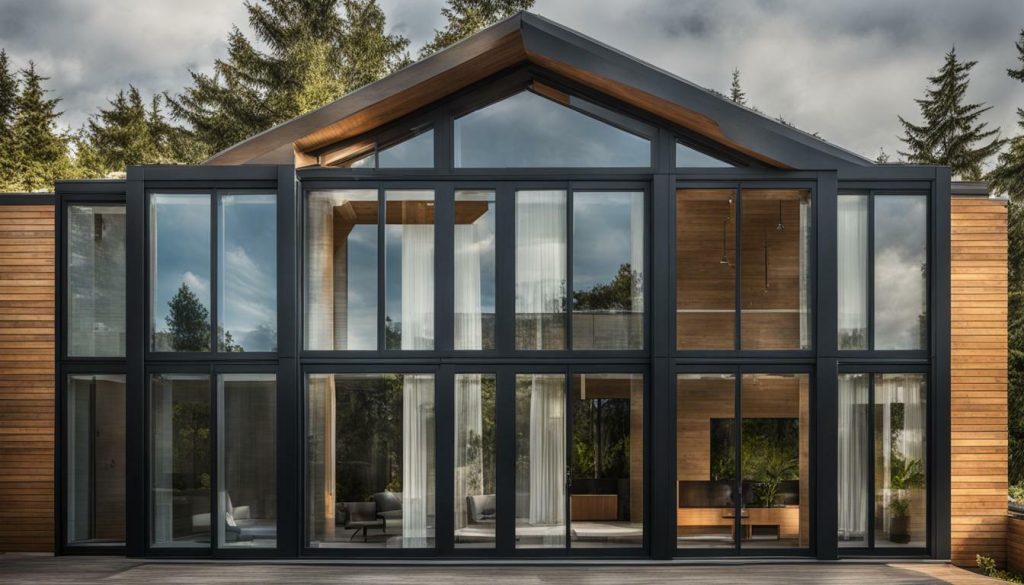
Remember, home performance is an essential aspect of HVAC efficiency, and by addressing areas such as insulation and ductwork, you can create a more comfortable and energy-efficient living environment for your customers.
Installing Improperly Sized HVAC Systems
Properly sizing HVAC systems is essential to ensure optimal performance and avoid unnecessary expenses for your clients. One of the common mistakes in the industry is installing a smaller HVAC system than necessary. While it may seem like a cost-saving measure, improper sizing can lead to higher utility costs and maintenance issues in the long run.
When an HVAC system is too small for a home, it will struggle to meet the desired heating or cooling demands, resulting in inadequate comfort levels for your clients. The system will have to work harder and run for longer periods, leading to increased energy consumption and higher utility bills. Additionally, an undersized system may struggle to maintain consistent temperatures throughout the house, causing discomfort for occupants.
On the other hand, installing an oversized HVAC system is equally problematic. While it may provide quick heating or cooling, it will constantly cycle on and off, leading to frequent temperature fluctuations and inefficient operation. This can result in excessive wear and tear on the system, leading to more frequent repairs and maintenance needs.
To avoid these issues, it’s crucial to accurately size HVAC systems based on the specific requirements of each home. Factors such as square footage, insulation levels, and the number of occupants should be taken into consideration. Conducting a thorough load calculation and consulting industry standards can help ensure that the HVAC system you install is the right size for the job.
| Common Consequences of Improper Sizing | Solutions |
|---|---|
| Higher utility costs | Accurately calculate heating and cooling loads |
| Increased maintenance needs | Consult industry standards for proper sizing |
| Reduced comfort levels | Consider factors such as square footage and insulation levels |
| Excessive wear and tear on the system | Conduct load calculations for each home |
By avoiding the mistake of improper sizing, you can ensure that your clients’ HVAC systems operate efficiently, providing optimal comfort and energy savings. Taking the time to accurately size each system will not only benefit your clients but also contribute to your reputation as a knowledgeable and reliable HVAC contractor.
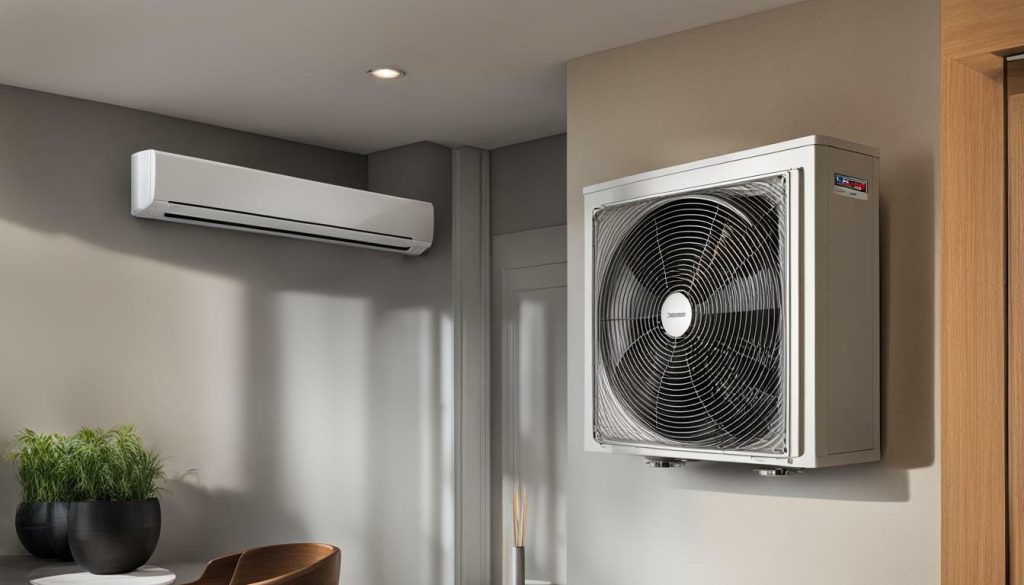
Using Rules of Thumb or Estimates for Pricing
Accuracy is key when pricing HVAC bids – avoid relying on rules of thumb or estimates that can lead to larger bills for customers or eroded profits for contractors. Instead, take the time to gather accurate measurements and thoroughly examine the system’s efficiency before issuing a quote. By doing so, you can provide a more precise and fair pricing for your customers while ensuring your business remains profitable.
When you rely on rules of thumb or estimates, you run the risk of underestimating the true cost of the project. This can result in unexpected expenses for the customer and potentially damage your reputation. It’s crucial to consider factors such as the size of the space, the complexity of the installation, and any unique requirements that may affect the overall cost.
By gathering accurate measurements, you can ensure that your pricing reflects the specific needs of each project. Take into account the size of the property, the number of rooms or zones that need to be serviced, and any additional features or upgrades requested by the customer. This level of detail will not only provide a more accurate quote but also showcase your professionalism and attention to detail.
| Common Mistakes | Consequences |
|---|---|
| Relying on rules of thumb or estimates | Larger bills for customers |
| Underestimating project costs | Eroded profits for contractors |
| Not considering unique requirements | Reputation damage |
| Ignoring accurate measurements | Inaccurate quotes |
Best Practices for Accurate HVAC Pricing
- Perform a comprehensive evaluation of the property to determine specific needs and requirements
- Gather accurate measurements of the space, taking into account any unique features or challenges
- Consider the complexity of the installation and any additional services or upgrades requested by the customer
- Factor in the cost of materials, labor, and any necessary permits or licenses
- Provide a detailed breakdown of the quote, explaining the specific factors that contribute to the pricing
By following these best practices, you can ensure that your pricing is fair, transparent, and based on accurate information. This not only helps you build trust with your customers but also establishes your reputation as a reliable and professional HVAC contractor.
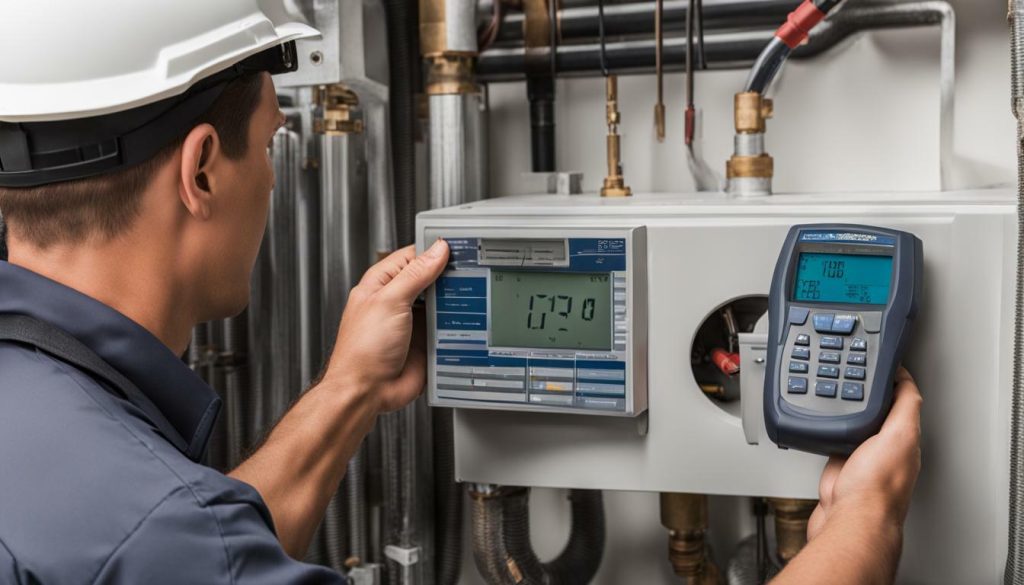
Neglecting the Business Side of HVAC Contractors
To achieve long-term success, HVAC contractors must not overlook the business aspects of their company, including accounting and marketing. While the technical work is essential for delivering high-quality HVAC services, it’s equally important to effectively manage the business side of operations.
One crucial aspect is accounting. HVAC contractors need to maintain accurate financial records, track expenses, and manage invoicing and payments. By keeping up-to-date financial records, contractors can have a clear understanding of their business’s financial health, make informed decisions, and ensure that they are operating profitably.
Marketing is another vital component of a successful HVAC business. Contractors should invest time and resources to develop a strong online presence, including a professional website and social media profiles. By creating informative content, engaging with potential customers, and utilizing targeted advertising campaigns, contractors can attract new clients and build a reputable brand in their local market.
By not neglecting the business side of their company, HVAC contractors can set themselves up for long-term success. By effectively managing accounting tasks and implementing strategic marketing initiatives, contractors can ensure the growth and profitability of their business while delivering exceptional HVAC services to their customers.

| Key Factors to Consider | Benefits |
|---|---|
| Accurate accounting | Financial visibility and informed decision-making |
| Strategic marketing | Increased brand visibility and customer acquisition |
| Professional website and online presence | Enhanced credibility and customer trust |
| Engaging with potential customers | Improved customer engagement and lead generation |
| Targeted advertising campaigns | Maximized marketing ROI and customer conversion |
Conclusion
By avoiding common HVAC proposal mistakes and implementing best practices, you can enhance your bids and win more contracts in the HVAC industry. When troubleshooting HVAC systems, remember to treat each home as a unique system and consider the overall performance throughout the entire house. Don’t neglect the importance of ductwork; ensure there are no leaks and that the system fits the home properly. Pay attention to air flow, air pressure, and ventilation to prevent problems and unnecessary strain on HVAC systems.
Take advantage of home performance opportunities to improve HVAC efficiency. Identify insulation issues, dirty ducts, and other factors that can be enhanced to provide better air comfort for your customers. Ensure you install properly sized HVAC systems to avoid higher utility costs and maintenance in the long run.
When pricing bids, don’t rely on rules of thumb or estimates. Instead, take accurate measurements and thoroughly examine the system’s efficiency before issuing a quote. Finally, remember that focusing on the business side of your company is just as crucial as the technical work. Pay attention to tasks like accounting and marketing for long-term success.
FAQ
What are some common mistakes to avoid when creating HVAC proposals?
Some common mistakes to avoid when creating HVAC proposals include focusing on only one section of the house, neglecting the importance of ductwork, overlooking air flow, neglecting home performance opportunities, installing improperly sized HVAC systems, using rules of thumb or estimates for pricing, and neglecting the business side of HVAC contractors.
Why is it important to treat each home as a unique system when troubleshooting HVAC systems?
Treating each home as a unique system when troubleshooting HVAC systems is important because it helps ensure the HVAC system works well throughout the entire house.
Why is it crucial to change out ductwork when installing a new HVAC system?
It is crucial to change out ductwork when installing a new HVAC system to ensure there are no leaks and that the system fits the home properly.
What should be considered when it comes to air flow in HVAC systems?
When it comes to air flow in HVAC systems, it is important to pay attention to air pressure and ventilation to avoid problems and prevent the system from running harder than necessary.
Why should home performance be considered an opportunity to improve HVAC efficiency?
Home performance should be considered an opportunity to improve HVAC efficiency because by examining the entire home, HVAC contractors can identify insulation issues, dirty ducts, and other factors that can be improved to enhance air comfort for customers.
What are the potential consequences of installing a smaller HVAC system than necessary?
Installing a smaller HVAC system than necessary can lead to higher utility costs and maintenance for clients.
Why is it important to have accurate measurements and examine system efficiency before pricing HVAC bids?
Having accurate measurements and examining system efficiency before pricing HVAC bids is important to avoid larger bills for customers or eroded profits for contractors.
What is the importance of HVAC contractors focusing on the business side of their company?
It is important for HVAC contractors to focus on the business side of their company as much as the technical work, including tasks like accounting and marketing, to ensure long-term success.





0 Comments